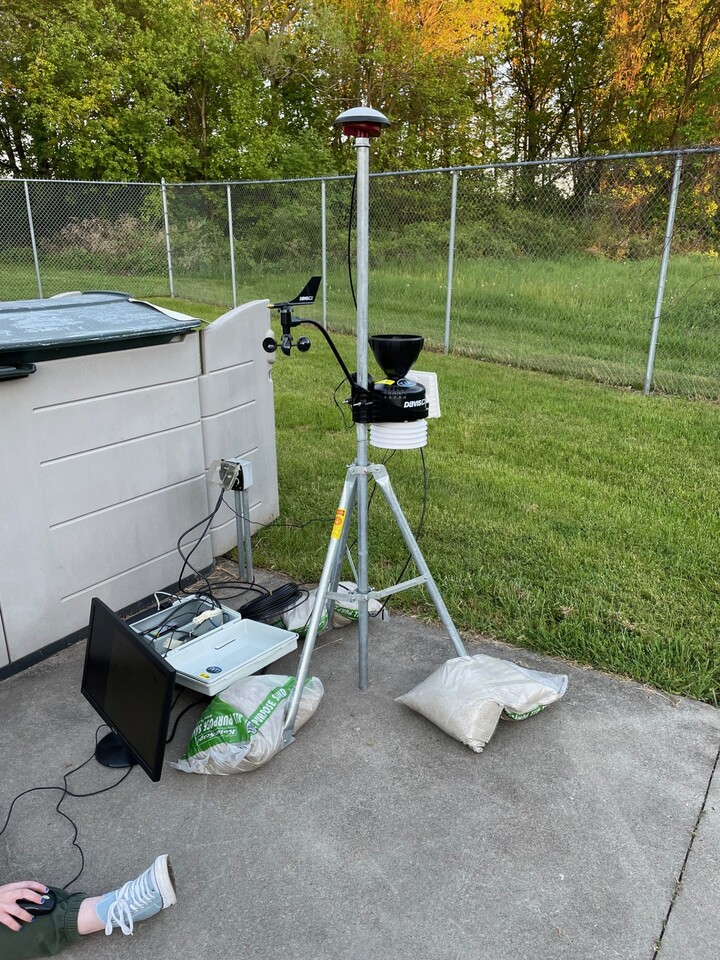
On the night of May 19/20, 2025, under good conditions (until 2:30 AM), I acquired images of the recurrent nova T CrB. This star undergoes outbursts at long intervals of 80 years or so. Its next outburst is predicted to occur soon (but then again, it was also predicted to occur during 2024), and so I've joined the crowd who are monitoring it.
T CrB was still quiescent, based on our measurements this night.
In addition to observing T CrB, I helped Mike Zemcov and two of his students to set up and test some equipment that they will be using in future projects elsewhere. Audrey Dunn set up a weather station ...

... and Kazuma Noda ran experiments with the CSTARS telescope-and-camera. We removed the 14-inch telescope from the mount in the roll-off building and replaced it with CSTARS for these tests; we will continue these experiments next week.
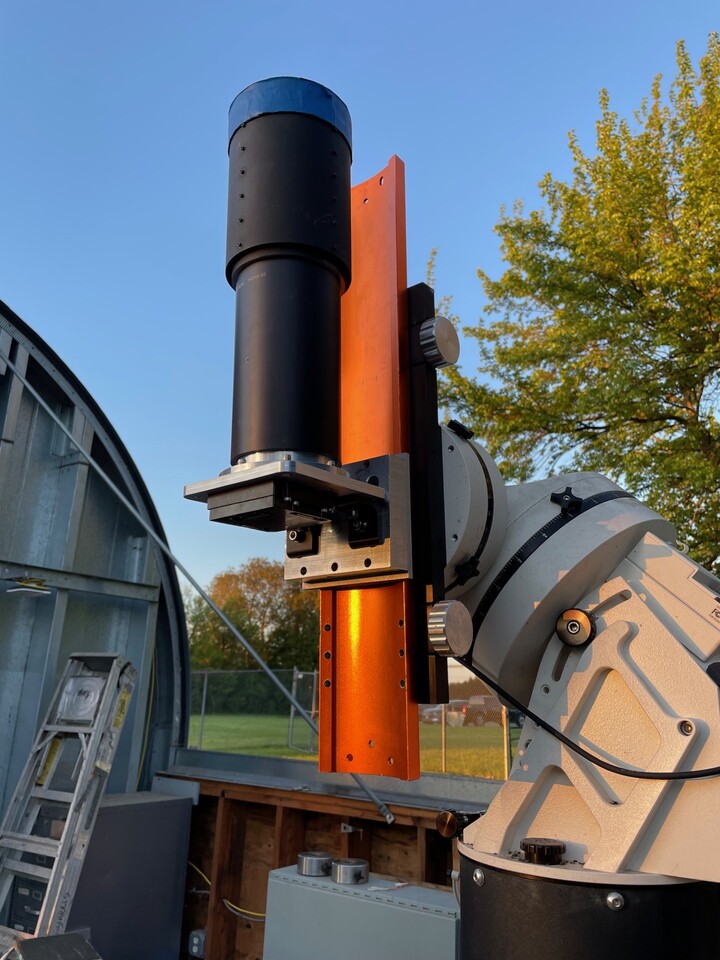
This recurrent nova brightens from by about 8 magnitudes (!), from V = 10 to about V = 2, around every 80 years. Will we see another outburst THIS summer?
These observations involved:
Notes from the night:
The picture below shows a cropped image of the field of T CrB from Jun 14/15, 2024. The field of view is about 20 arcminutes across.
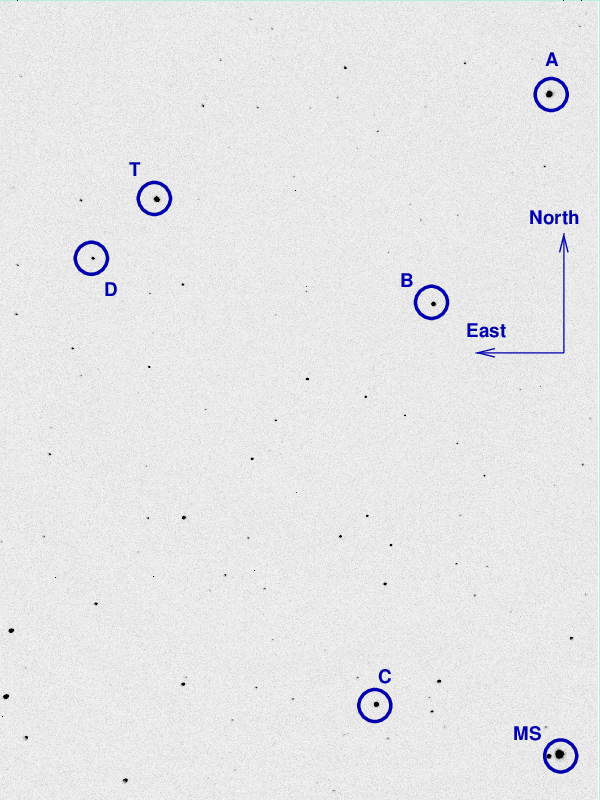
I've marked the location of several comparison stars, with magnitudes and names taken from the AAVSO's table X40237AAS. Note that the magnitudes listed for stars "A" and "B" have changed from the ones I listed in last year's notes.
star name B V
------------------------------------------------------
A 000-BJS-901 11.096 10.554
B 000-BBW-805 11.779 11.166
C 000-BPC-198 13.049 12.336
--------------------------------------------------------------------------
When the target is centered, the finder TV shows this field:
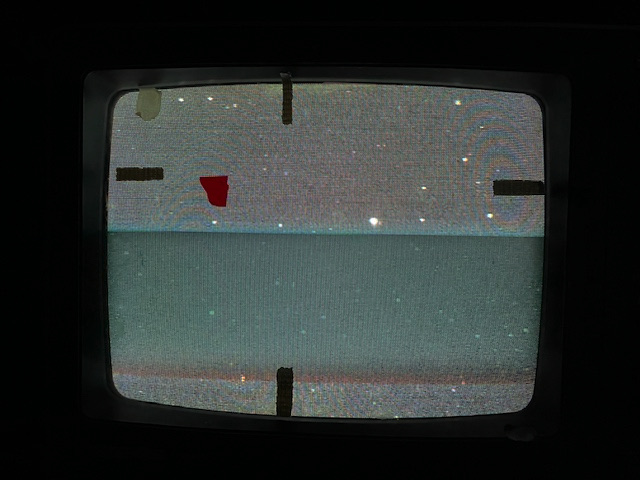
Here's the sky background over the course of the run. The clouds arrived around 2:30 AM.
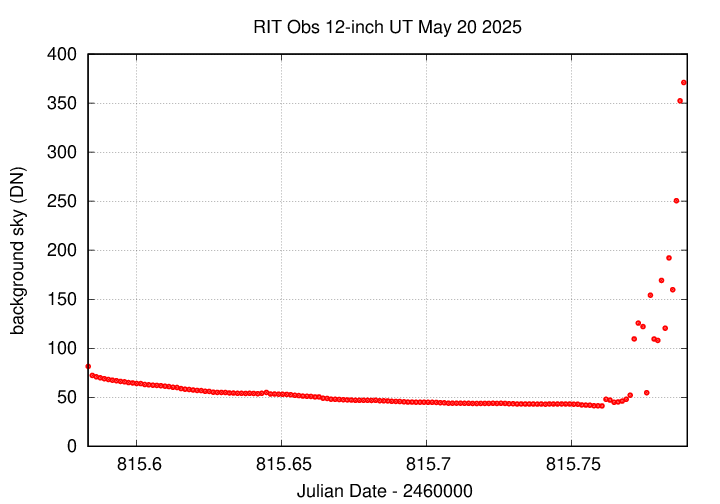
The FWHM dropped just a bit over the run.
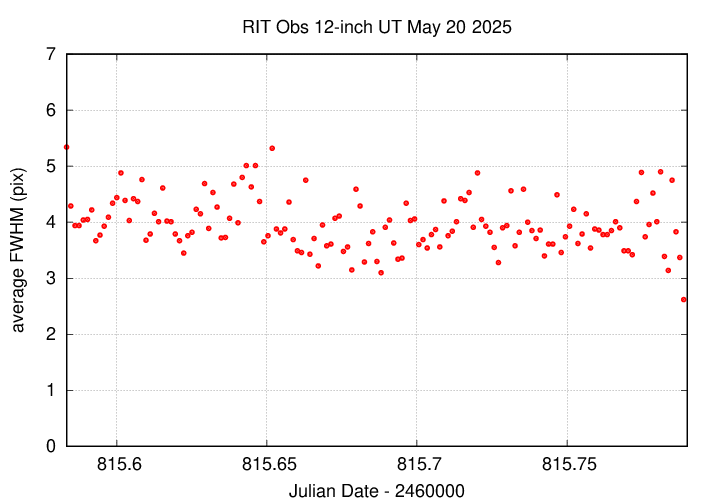
The graph below shows changes in the photometric zeropoint of an ensemble solution of the instrumental magnitudes over the course of the run.
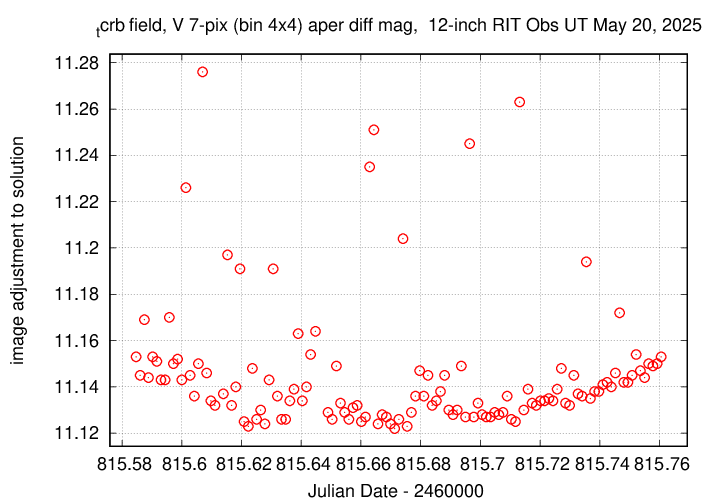
Using aperture photometry with a radius of 7 pixels in V filter (binned 4x4, each pixel is 1.036 arcsec, so a radius of 7.3 arcsec), and 7 pixels in B filter (binned 4x4, each pixel is 1.036 arcsec, so a radius of 7.3 arcsec), I measured the instrumental magnitudes of a number of reference stars and the target. Following the procedures outlined by Kent Honeycutt's article on inhomogeneous ensemble photometry, I used all stars available in each image to define a reference frame, and measured each star against this frame.
Sigma-vs-mag plots show that the floor in V-band was about 0.007 mag. In B-band, it was 0.005 mag.
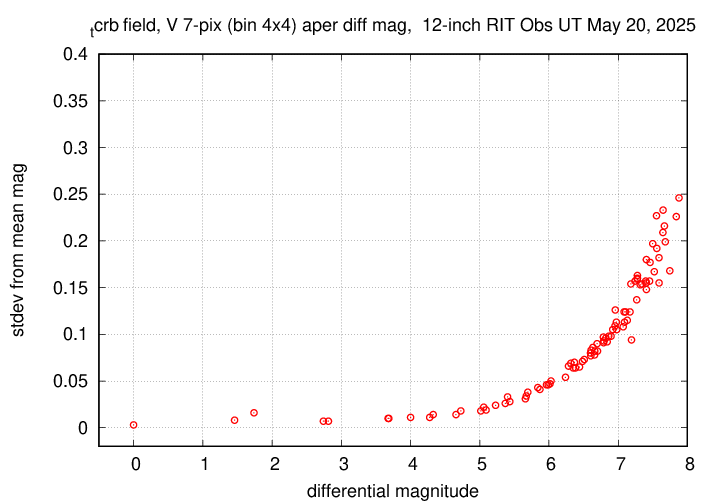
The measurements show that the target is still quiescent.
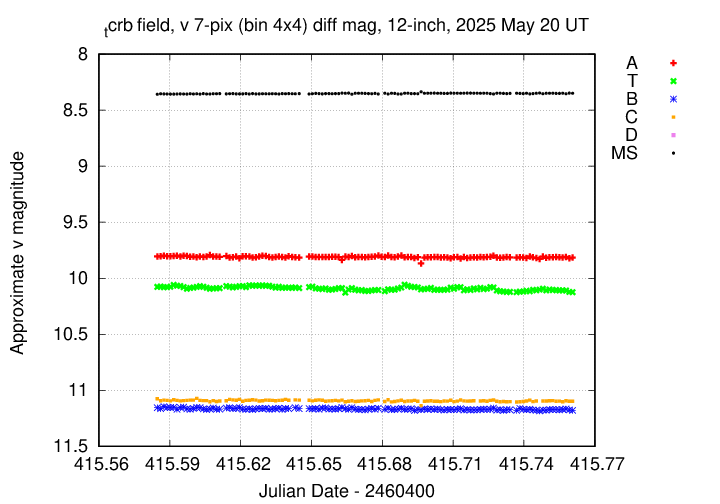
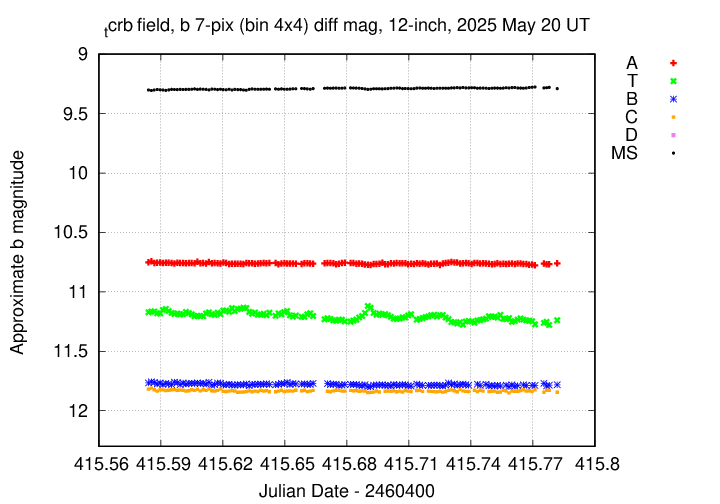
I've submitted these measurements to the AAVSO.